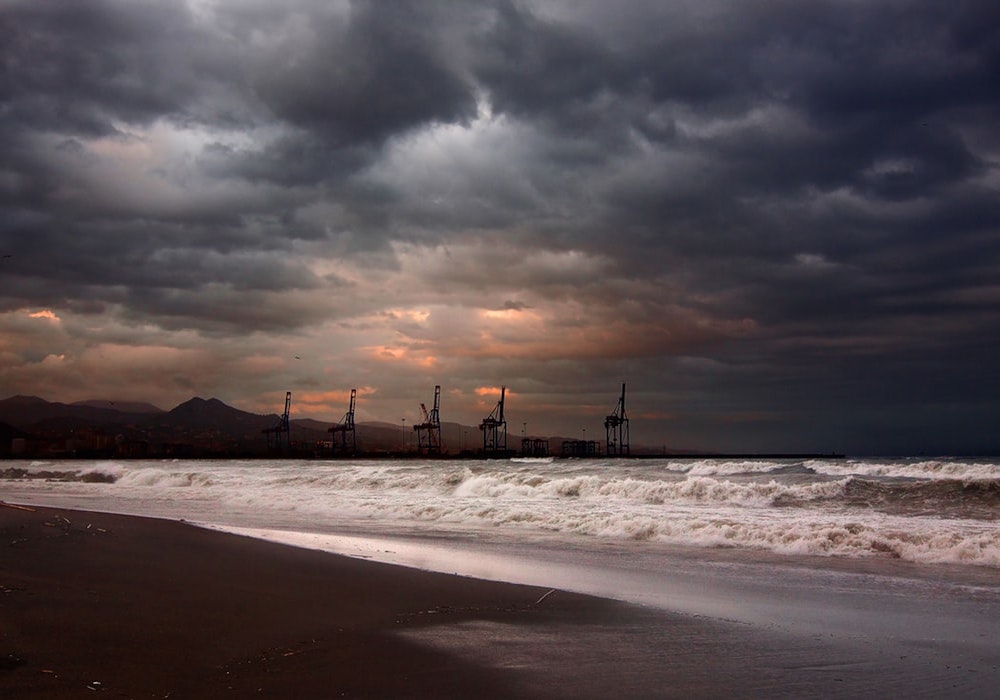ImpactAlpha, March 12 – A modest downturn in demand triggered a crash in oil prices that will strand billions of dollars in fossil fuel assets and, perhaps, signal a dramatic reduction in carbon emissions.
That the inciting incident was a worldwide pandemic and not, say, the adoption of electric vehicles or the establishment of a price on carbon, may not matter. Oil, says CarbonTracker’s Mike Coffin, “is in long-term structural decline.”
The cost of renewable energy and EVs have been on a steep downward curve, making many new and existing fossil fuel projects unviable.
The Spanish energy company Repsol in December became the first oil and gas major to commit to net-zero emissions by 2050 and wrote down $5 billion – for starters – in fossil fuel assets. BP followed last month (see “Leaders and laggards in the race to net-zero”).
Suddenly write-downs look quaint, as fossil fuel producers risk outright default. The oil industry collectively is shouldering $86 billion of debt that will come due in two to four years.
Leave it in the ground. Oil could hit a low of $20 a barrel, Goldman Sachs predicted this week, and for the moment, neither Saudi Arabia nor Russia looks ready to fold their cards. For comparison, oil drilling in the Arctic breaks even only at an average price of about $78 a barrel. Even U.S. shale producers’ high cost of production and need for cash puts them on precarious footing that may not be eased even if oil prices rebound somewhat over the short- to medium-term (see, “Is the carbon bubble about to burst?”).
Low prices provide an opportunity to wean the fossil fuel industry off of subsidies (which remain double the subsidies for renewables, according to the International Energy Agency. Instead, the Trump administration has signaled that it may bail out U.S. producers. Any propping up of oil companies “is a bad scenario for climate,” says Coffin.
Stranded financial assets. U.S. and global bankers, including JPMorgan Chase, Wells Fargo and Citigroup, provided almost $2 trillion in new fossil fuel financing between 2016 and 2018. JPMorgan, the largest bank and fossil fuel funder, has more than $40 billion in credit exposure to the oil and natural gas industries.
To be sure, that’s a fraction of JPMorgan’s lending. More exposed: Banks in oil-rich states such as Oklahoma’s BOK Financial and Bank7 Corp. and Texas-based Cadence Bancorporation make a higher percentage of their loans to the industry, according to Keefe, Bruyette & Woods.
Shareholder showdown. Fossil fuel producers increasingly are at odds with asset owners and managers, who are looking for the industry to better manage its own decline.
Shareholders are pressing for more disclosure on potential for stranded assets from natural gas producers like Sempra Energy and Dominion Energy, which are building out infrastructure in states such as California and Virginia that have pledged to transition to 100% clean energy. The companies appealed to the S.E.C., which granted their request to ignore the resolutions.
“As states clamp down on greenhouse gas emissions, long-lived natural gas infrastructure is increasingly likely to be stranded,” said Lila Holzman of shareholder advocacy group As You Sow, which filed the resolutions. By excluding the resolutions, “These companies are seeking to avoid responsibility for a risk that will only grow.”











